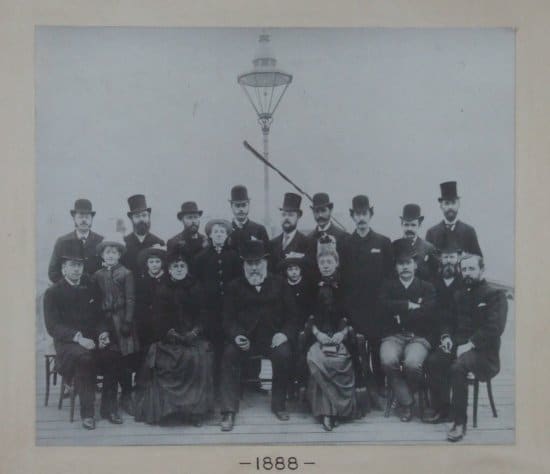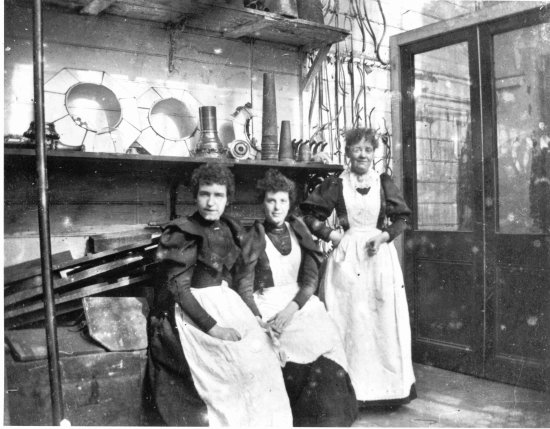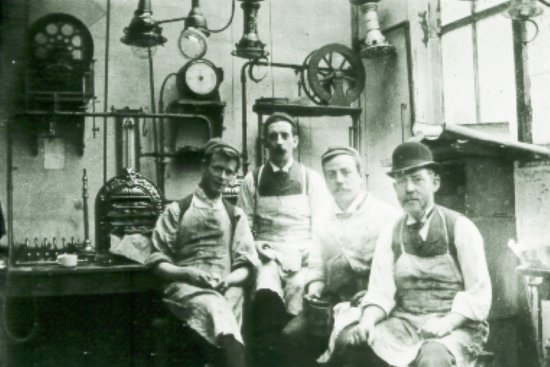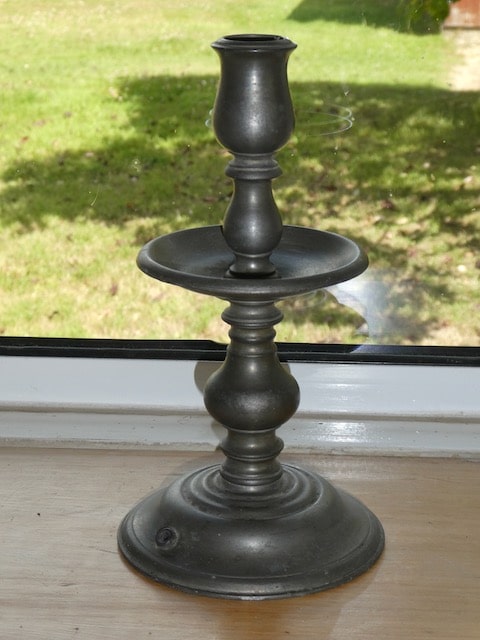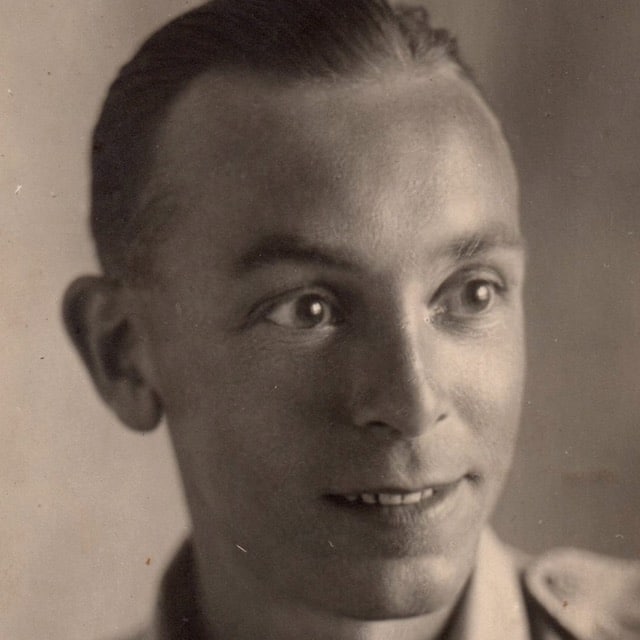This section has been added to provide a space for the many hundreds of people who have been employed or involved with this long-lived company. Several of the photos go back a long way such as this first one and show large groups of employees all of whom by now will have gone to that other world leaving only their photos and families behind them. Sometimes the date is unknown but a hopefully intelligent guess has been made. If you spot an ancestor do make contact so that names can be added.
Don’t forget to ‘click’ to enlarge the picture and some can be enlarged twice with the top right hand symbol.
The second reason for this section is that I have received letters from retired employees – some at a very advanced age – describing their life and the factory and even giving names of work colleagues and managers etc. This helps to give a picture of life in the factory over a good period of its existence. Some of the pictures and descriptions do appear elsewhere on the site but are collected here as there now appears to be sufficient to merit its own section.
If you have any information or recollections or suggestions I would be happy to add them here.
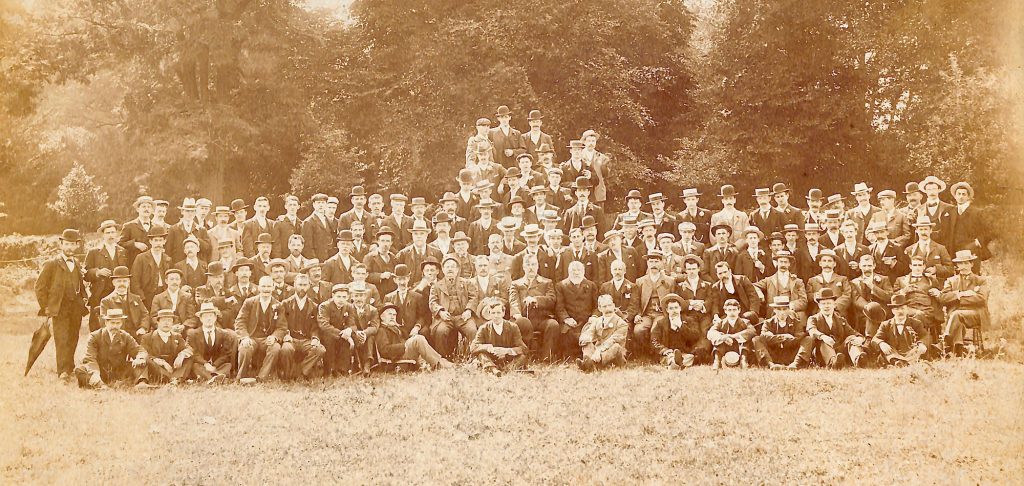
Group of 115 William Sugg employees including an elderly William sat just right of centre in dark top coat and of course with a beard. Approximate date 1900 and could be a picture taken prior to an ‘Employees Annual Summer Outing’ such as the one described in the very ornate invitation card dated Saturday 18th August 1900 to be shown below. (Exactly 118 years ago to the day it was added to this site!)
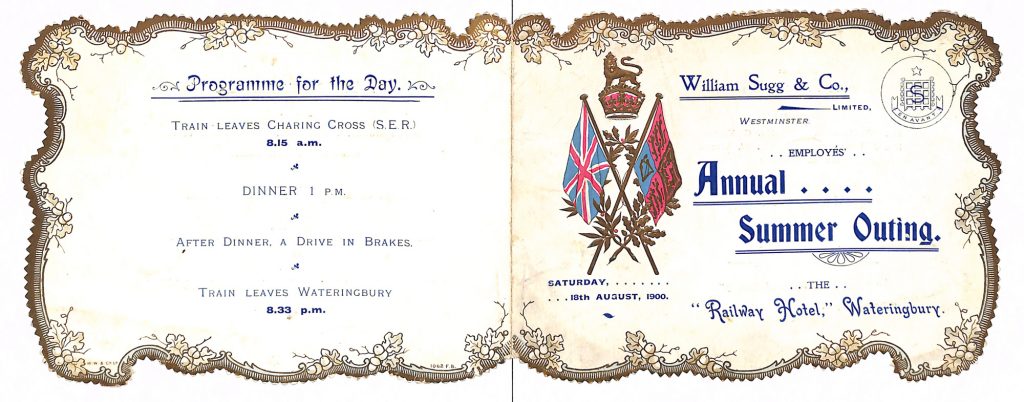
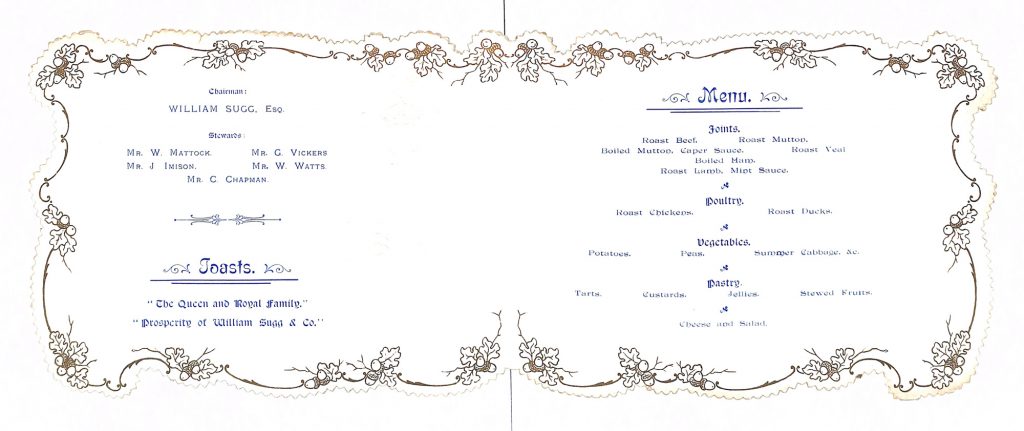
Taken on the roof of the newly completed extension to ‘Vincent Works’ with senior employees and lots of family surrounding William Sugg with a post mounted “Westminster’ lamp in the background. This picture comes from the ‘History, Section 3’ where all the known the names have been added.
Works Staff
The two pictures above were clearly taken in the Westminster factory at their respective benches. The men appear to be at lunch and the picture must have been taken by one of their colleagues with probably a ‘pinhole’ camera.
Centenary Dinner 1937
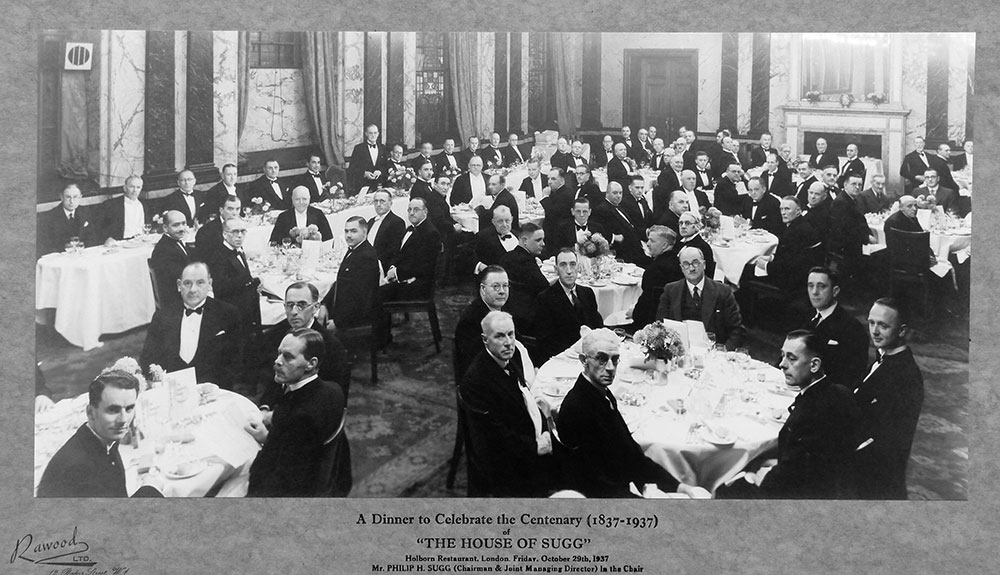
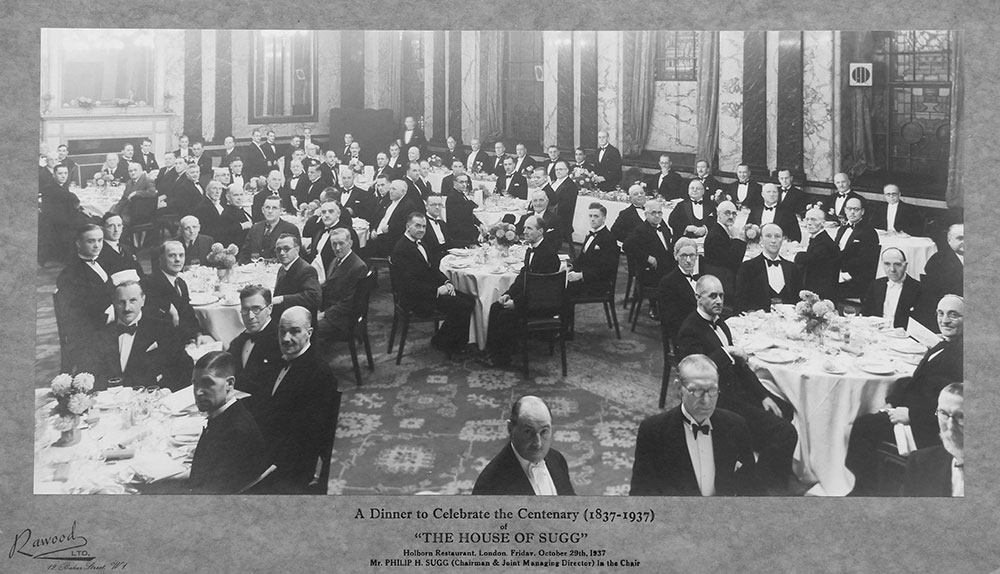
Centenary Dinner of “The House of Sugg” 1937, with PH Sugg, Chairman, standing at the centre of the long table. These pictures come from the History Section 4 where you can find the whole invitation list.
Ernest Barnden
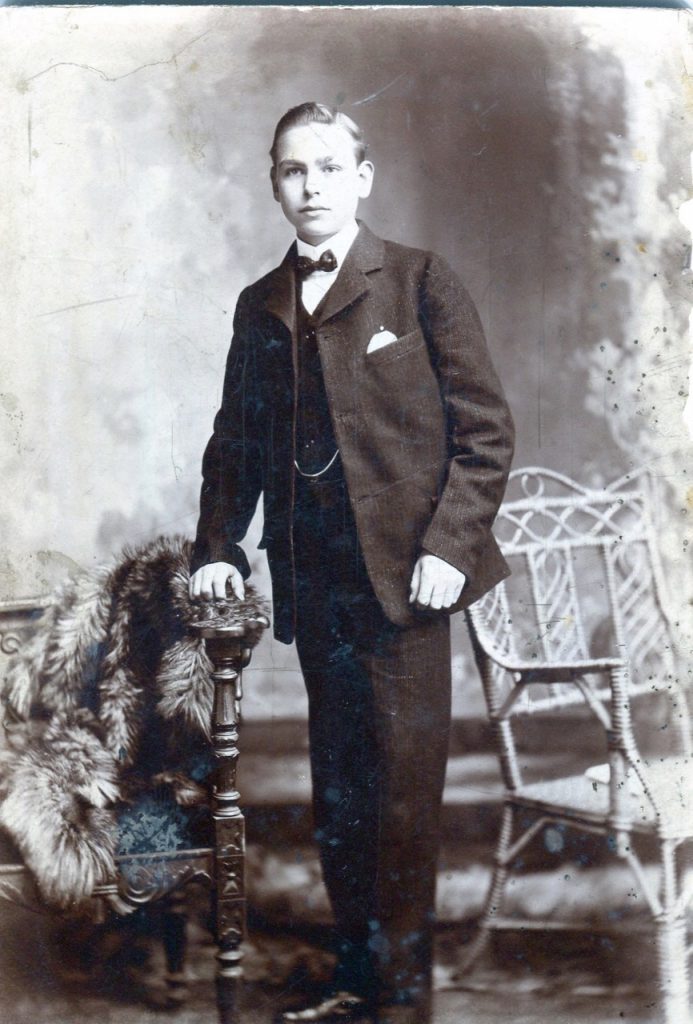
This is a picture of Ernest Barnden in his late teens, early twenties, sent to me by his grandson, Barrie in late July 2020. Barrie had contacted the company with a William Sugg headed letter from 1909 addressed to Ernest providing him with his indentures as requested.
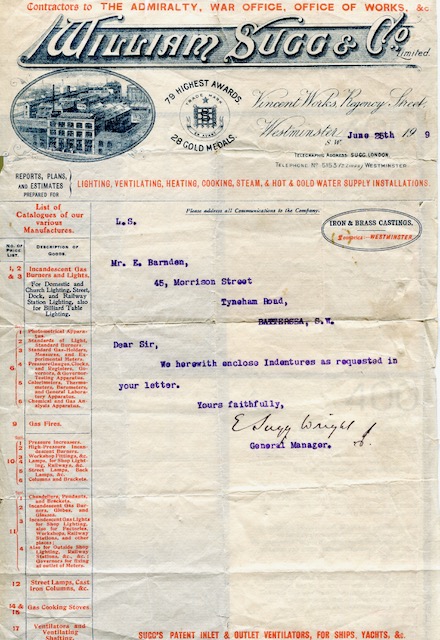
As you can see, this letter is signed by E Sugg Wright as General Manager. I explained to Barrie that William Sugg who started the company had a daughter Susanna Amelia before William Thomas – so an older sister. She married Simeon Wright and they had several children amongst whom was Edwin Henry Wright and, for that matter Walter Stanley Wright, both of whom worked for their Uncle William Thomas and took on the double barrelled Sugg-Wright name for perhaps obvious reasons. You can see from the Centenary Booklet Page 21 “William was succeeded by his nephew, Mr Edwin Sugg-Wright who was appointed General Manager in 1907 and also Secretary in 1910, he relinquished his offices as General Manager and Secretary at the end of 1910 to be appointed Managing Director. Unfortunately, he only held that position for seven months when he died.”
Amongst the effects of Ernest Barnden were several documents related to his exemption from military service. These documents have been added to the pictures of the works in WW1 in History Section 4 to clarify how the men avoided the horror of the trenches.
During further correspondence I was told that Ernest had left 2 brass candlesticks which had come from Suggs and may have been an apprentice task. On receipt of the picture below I realised that I had an identical candlestick although not in the same finish. This one had come from my grandfather and had been converted to electricity! (Yes, electric candle!) There is a small bush in the base where the wire came out and was fitted with one of those push to and fro switches on its way to the plug. There was a candle coloured tube embedded in the candle holder hiding a small tube with an SBC lampholder and a pretty shade with a clip-on arrangement to hide everything. I think the finish is intended to look like pewter. Having their own plating department almost any finish was possible! Somehow I don’t think it was an apprentice piece!
Candles in use! Ernest Barnden’s Candlesticks Chris Sugg’s Candlestick!
William James Smith
I received the following letter from William James Smith via his daughter at the end of 2012 when he was approaching 94. I fear he has since died but he left behind a memorandum of life at Suggs from 1933 which includes names of employees and descriptions of the building and work. Interestingly he clearly worked closely with my father, Crawford Sugg in the construction of the triple mirror head device for optical measurements and other R & D work.
William James Smith
Memories of my time at William Sugg and Co.
My name is William Smith and I joined the firm of William Sugg and Co. at Easter 1933. I started work in the works office which was managed by a Mr Daniels, who I believe was the person who invented the DCD (or as it was known, the Distant Control Device). Also in the office were Mr Casford and Mr Burns.
Mr W Mattock was the first person to receive any daily orders and they were then passed on to Mr H Burns to go to the various departments who were involved. After Mr Burns had written them out it was my job to go to the ‘Shops’ and hand them over to the Foremen to sign. This meant I soon had the knowledge of the factory and got to know who was in charge of the departments.
Starting with the Entrance in Regency Street, the Time Office was to the left and WM Mattock’s office to the right. Then on the top floor was the Draughtsmen’s Dept., in the charge of Mr T Frampton, and also the R&D section supervised by Mr Crawford Sugg. The next floor down was the Tin Shop with Bob Clothier in charge.
I have tried to remember the “Shops” and the Foremen in charge:
Rochester Assembly Shop Mr Wicox
Con Sets Shop R Hubbard
Paint shop T Hurd
Joiners W Coghill (H) xx (xx common to the Smith list.)
Brass Machine Shop W Sweeney xx
Blacksmith Shop R Fuller xx
Automatic Shop W Squires xx
Brass Fitting Shop J Creed
Steatite Shop D Vanstan (J) xx (initial letter on the ‘scroll’.
Foundry Phil LeBrun
Packers (Lamps And Shipping Crates) W Clarke
Time Office R Dale (H) xx
Tin Shop R Clothier and then William James Smith!
Other departments were:
Plating Shop, Spinners, Testing Shop, Stores, Wages Office
I started my career at Easter 1933 and finished my apprenticeship in 1940. I was called up to the army and served until 1946; I then re-joined the company and was soon making Windsor Lamps.
I was called upon to make two triple-mirrored stands; one for the firm and one for Siemens, a very enjoyable and interesting task.
I also undertook a lot of R&D work for Mr Crawford Sugg.
I left the firm in 1960 when my family relocated to Southampton. When I handed in my notice, Mr Crawford Sugg came to see me personally to ask me to reconsider and offered me a pay rise but I had already secured housing and a job in Southampton and my family was set to move.
I do hope that this is of help to Mr Chris Sugg and as I am approaching 94 apologise for any inaccuracies or omissions as my memory is not as it used to be. I would have liked to have seen a copy of the firm’s lamp collection brochure to remind me of my time. I have seen the pictures on the computer and they look very interesting and bring back many memories.
Best Wishes William Smith
December 2012
Received 4th Jan 2013 in sequence of emails from Lesley Hurrell.
Much later after I added the ‘People’ section, I asked Lesley if she had a photo of ‘Bill’ which she kindly sent me in 2020 along with the eulogy from his funeral.
Brief excerpts from the eulogy to William James Smith (Bill)
22nd March 1919 – 17th January 2016
Bill was born into a large London family in March 1919, the second youngest of eleven surviving siblings. He grew up in Pimlico in an area close to Vauxhall Bridge and the Thames and the family lived in various Peabody housing schemes and rented houses in the area during Bill’s young life.
At Easter 1933 Bill was apprenticed to William Sugg and Co. and starting in the works office where he soon got to know the factory and its staff. From there he began learning his “trade” as a sheet metal worker and also played football and cricket for the works teams (and for those of his brothers who also worked in the area). He continued at Suggs until the Second World War broke out in September 1939 and he was called up. Thankfully, he had completed his apprenticeship.
Bill joined the Middlesex Regiment as a heavy artilleryman. During the war, Bill served in the North Africa and Italy campaigns and was among the first to land at Anzio where the now Corporal Smith and his Battery provided heavy artillery support to other Allied troops following behind. His regiment was among the first to enter Rome (ahead of the Americans, as he was always proud to say).
Bill returned to William Sugg and Co and was soon making the famous Windsor Gas Lamps which graced the streets of London. He and Joyce took lodgings in Cambray Road, London. Bill began working on research and development projects for the owner of the Company, Mr Crawford Sugg, and was called upon to make two “triple-mirrored stands”, among other things; one for the firm and one for Siemens, a very enjoyable and interesting task, he later said.
(Whilst I would never wish to disagree with anything in such a delightful eulogy – of which this is only part – I have to correct the assumption that Crawford Sugg, my father, was the owner. As a brilliant engineer and in many ways the saviour of the company with his inventions he was always the Technical Director and, being a limited company since 1881 it was owned by the shareholders!)C.S.
The triple mirror head device mentioned is described in full in the Technical Section under Light Measurement
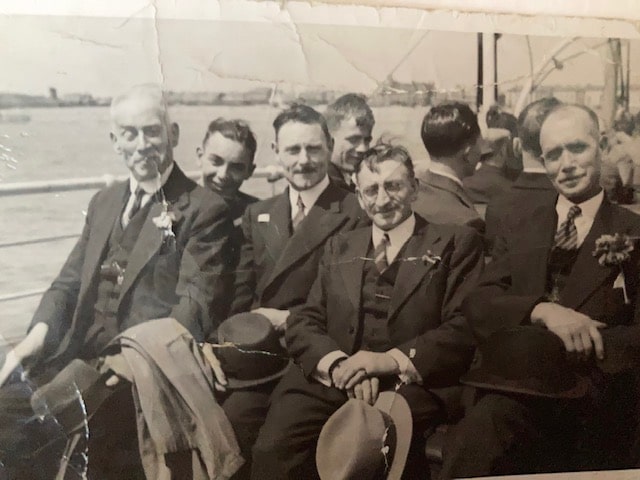
“Suggs works outing to Isle of Wight 1937. I was too young to go but Bill Judd smuggled me on to the train.”
William Smith is the ‘cheeky youngster’ second from the left peering between the two in the front row, all smartly dressed!
This is a picture from similar times at the Westminster factory and goes to show a little of what went on outside of pure work!
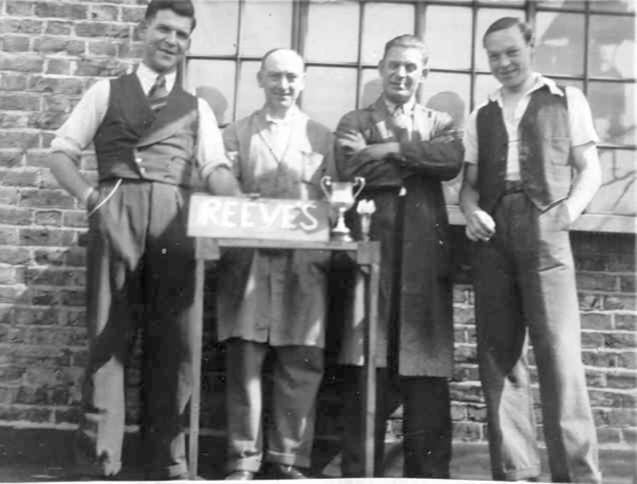
On the left is Bill Gould who became Works Manager, moved to the Crawley factory and when the original business was taken-over, joined the new company that eventually was to become Sugg Lighting. Sadly he died shortly after this re-start

